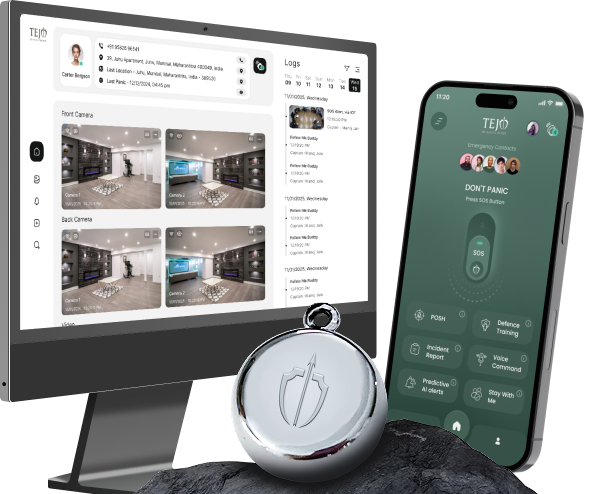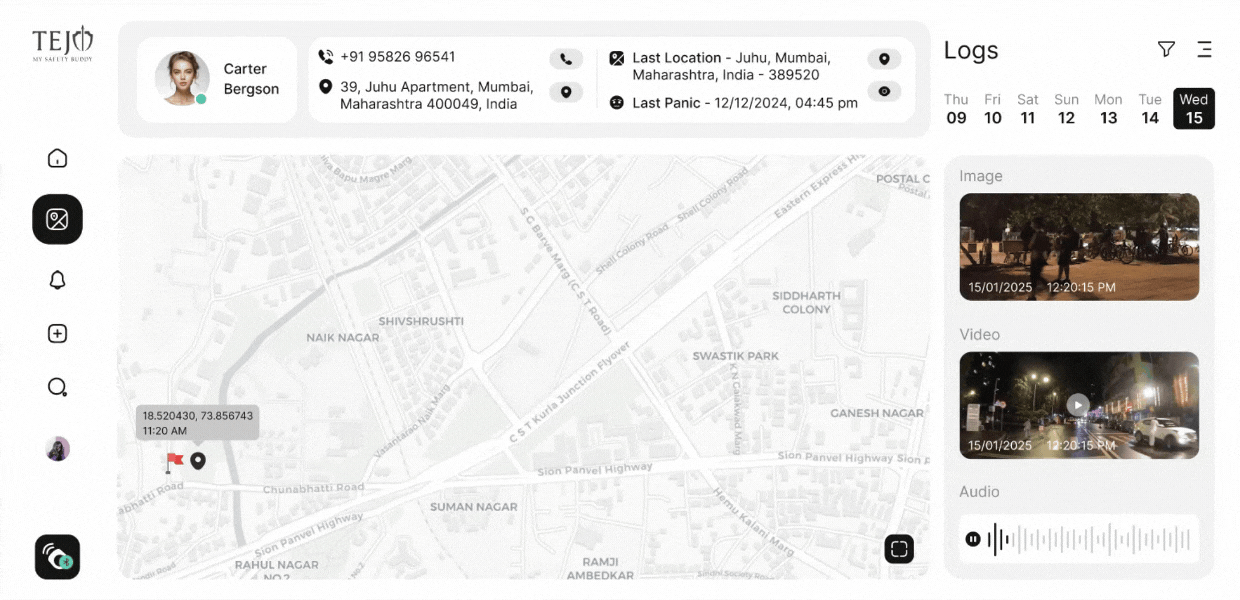IoT Wearable Device + Mobile App + Command Center = Reliable Safety
-
 IOT Smart Device
IOT Smart DeviceChoose from a stylish range of IoT-enabled devices, including keychains, pendants, and bracelets, designed to seamlessly fit into your lifestyle.
-
 Mobile App
Mobile AppWith a range of powerful features, the mobile app provides real-time safety alerts and support at the touch of a button.
-
 Command Center
Command CenterOur 365x24x7 monitoring hub ensures immediate response management, connecting women with first responders like police and ambulances in emergencies.
Tejo makes women safety a norm
Envisioning a world where no woman has to fear unsafe situations, we make safety an uncompromising right. Our gift to every woman - peace of mind, no matter where and when.
Powerful Alone, Unstoppable Together
With over 20 features, the Tejo mobile app packs a punch by itself and when paired with the IoT wearable device, it amplifies protection 10X.
Pro-active & Quick Response
Get fool-proof safety with our certified command control center, which provides centralized monitoring and rapid response capabilities.
Safe always – online or offline
Offline panic alerts ensure network connectivity never comes in the way of a woman’s safety.
Safety at scale
One or one million, empower multiple women with real-time safety.
Beyond alerts
Get a holistic women safety ecosystem comprising self-defense training programs, safety education, support & networking groups, and more.



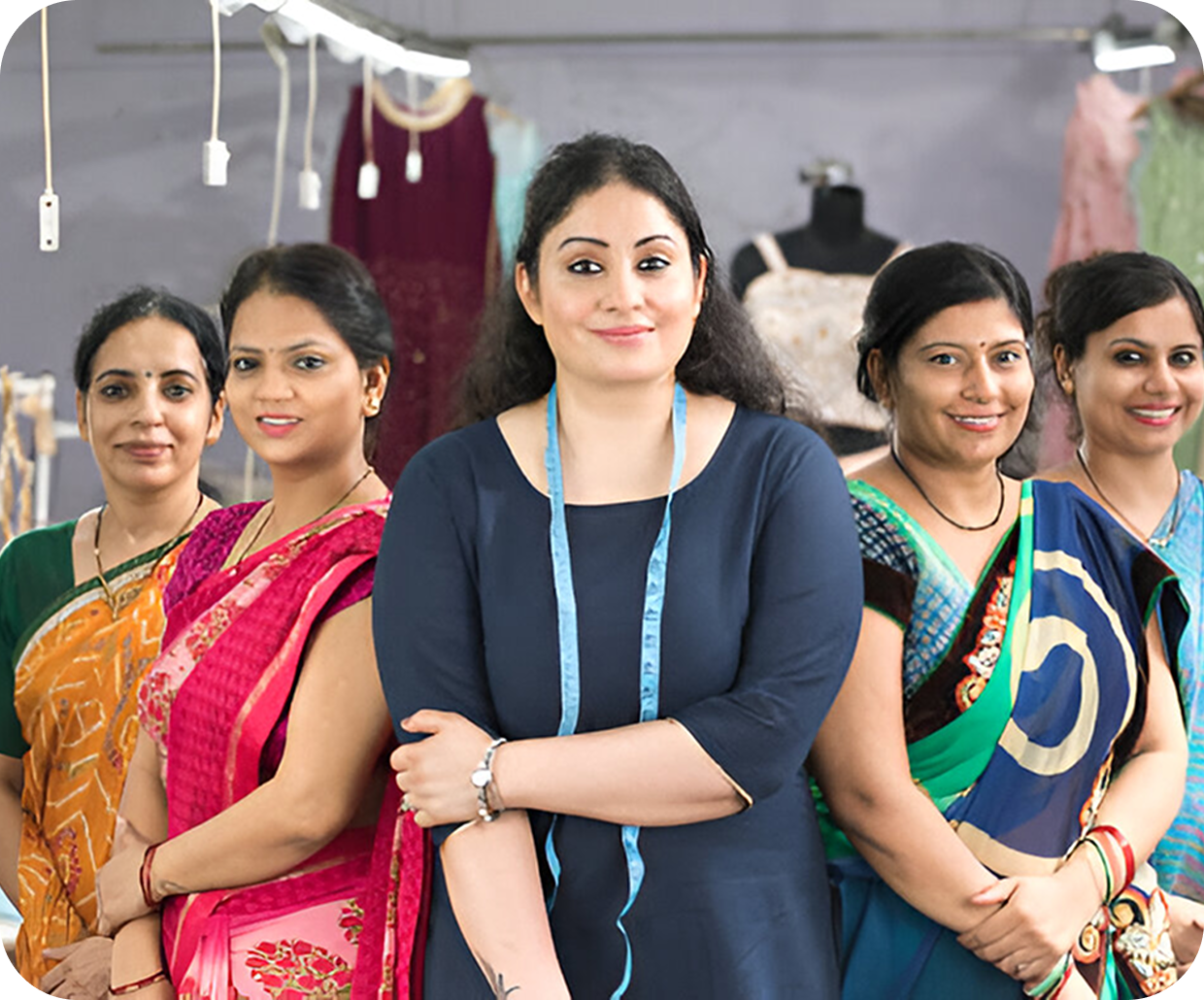

20+ Features to keep Women Safe
Comprehensive hardware and software features, more than any other device or app.

-
Predictive Alerts
-
Safety Map
-
Voice Activation
-
Raise Complaint
-
Live Tracking
-
Woman Safety Audits
-
Stay With Me
One unified dashboard for the modern enterprises
Businesses can ensure the safety of their women workforce at scale with a single, centralized dashboard, offering a comprehensive view of incident reports, usage analytics and compliance tracking for complete assurance and accountability.
From Trigger to Support: A Seamless Safety Process
The process behind our woman’s safety device

Without TEJO

-
Woman presses SOS trigger
-
Alert raised to Command Center
-
Command Center receives details
-
Notification triggered to emergency contacts
-
Woman receives call from Command Center
-
Command Center informs first responders
-
Woman is assisted to safety
With TEJO

Our Safety
Ecosystem

Awards &
Recognition
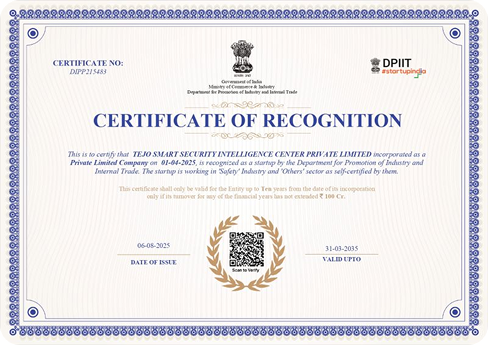
Startup India Certified
Officially recognized by Startup India as an innovative women-safety tech startup

Achievers India Awardee
Tejo honored with the Indian Achiever's Award 2025- Emerging Company, Women Safety Category
Traction & Achievements

5,000+ women onboarded with digital safety support

SOS feature has enabled 50+ real-time interventions

Offline emergency mode used in 10+ no-network zones
SDG & ESG Alignment for Corporate Impact
SDG Alignment
ESG Impact Areas

ESG Impact Areas
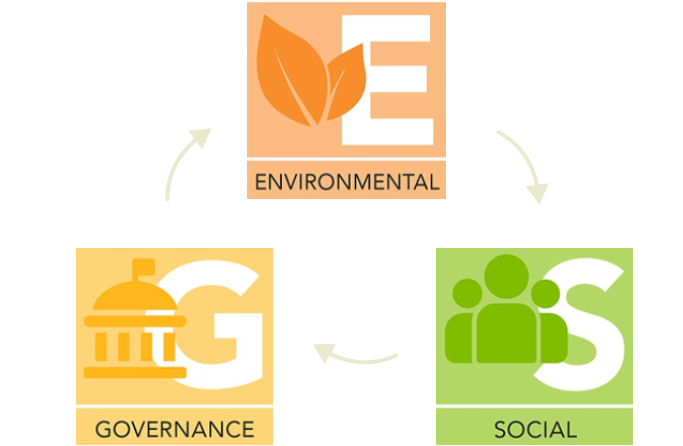
Empowering Safety for All


Corporates


NGOs


Individuals
A safer world begins with Tejo Mobile App

